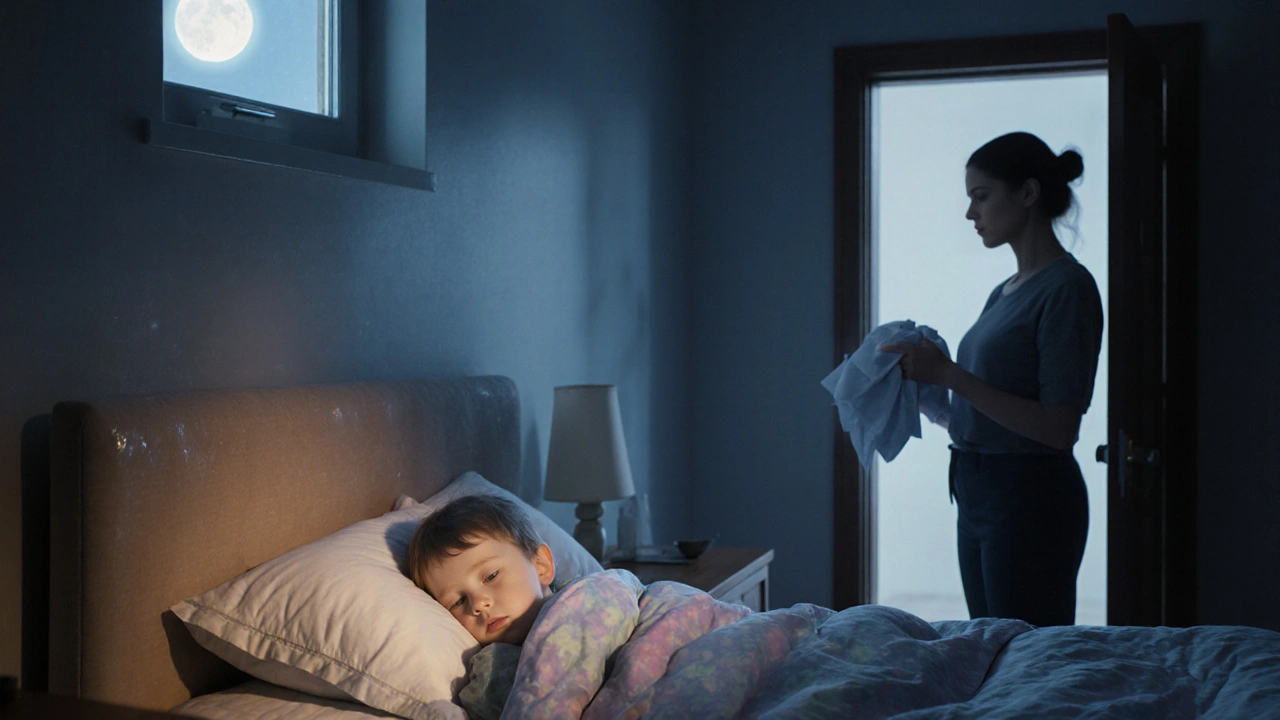Child Bedwetting – Understanding the Issue and How to Help
When dealing with child bedwetting, the involuntary loss of urine during sleep in children usually under 13. Also known as enuresis, it affects roughly 15% of 5‑year‑olds and can cause embarrassment, sleep disruption, and family stress.
Child bedwetting isn’t just a nighttime nuisance; it’s a signal that something in the urinary system, sleep pattern, or daily routine needs attention. The condition encompasses three main categories: primary (the child has never stayed dry through the night), secondary (dry periods followed by a relapse), and mixed forms. Knowing which type you’re facing guides the next steps, whether that’s simple habit tweaks or a short course of medication.
One of the most common physiological contributors is nocturnal polyuria – the body makes more urine at night than the bladder can hold. This often ties to low levels of the hormone vasopressin, which normally tells the kidneys to conserve water while you sleep. Desmopressin, a synthetic vasopressin analog that reduces nighttime urine output can correct that imbalance for many kids. Clinical trials show a 70% success rate in achieving dry nights when used short‑term under a doctor’s supervision.
Key Strategies for Managing Child Bedwetting
Behavioral approaches work hand‑in‑hand with medication. Bedwetting alarm, a moisture‑sensing device that wakes the child at the first sign of wetness teaches the brain to associate a full bladder with waking up. Research indicates that after 8‑12 weeks of consistent use, up to 60% of children stay dry even after the alarm is removed.
Bladder training during the day builds capacity and control. Simple steps – like encouraging the child to use the toilet every two hours, limiting caffeine‑rich drinks after lunch, and practicing “double voiding” before bedtime – reduce the amount of urine stored overnight. Parents who track fluid intake and nighttime bathroom trips often spot patterns that help fine‑tune the routine.
Sleep hygiene also matters. A calm bedtime ritual, a cool bedroom, and avoiding heavy meals late at night all support deeper, uninterrupted sleep. When a child sleeps soundly, the body’s natural hormone cycles are less likely to be disrupted, which can lower nighttime urine production.
Another piece of the puzzle is addressing emotional factors. Stress from school, sports, or family changes can trigger secondary enuresis. Open conversations, a supportive environment, and, if needed, counseling help the child feel in control and reduce anxiety‑related accidents.
Finally, keep the medical team in the loop. A pediatrician can rule out urinary tract infections, diabetes, or structural issues that mimic or worsen bedwetting. Regular check‑ins ensure that any medication is dosed correctly and that progress is monitored.
Below you’ll find a curated collection of articles that dive deeper into each of these areas – from medication safety and alarm selection tips to day‑time bladder‑training routines and the latest research on nighttime hormone therapy. These resources will give you the practical tools you need to support a dry, confident night’s sleep for your child.
Types of Bed‑Wetting & What Causes Them - A Complete Guide
Explore every type of bed‑wetting, uncover common causes, and get a clear step‑by‑step plan to stop night‑time accidents.
